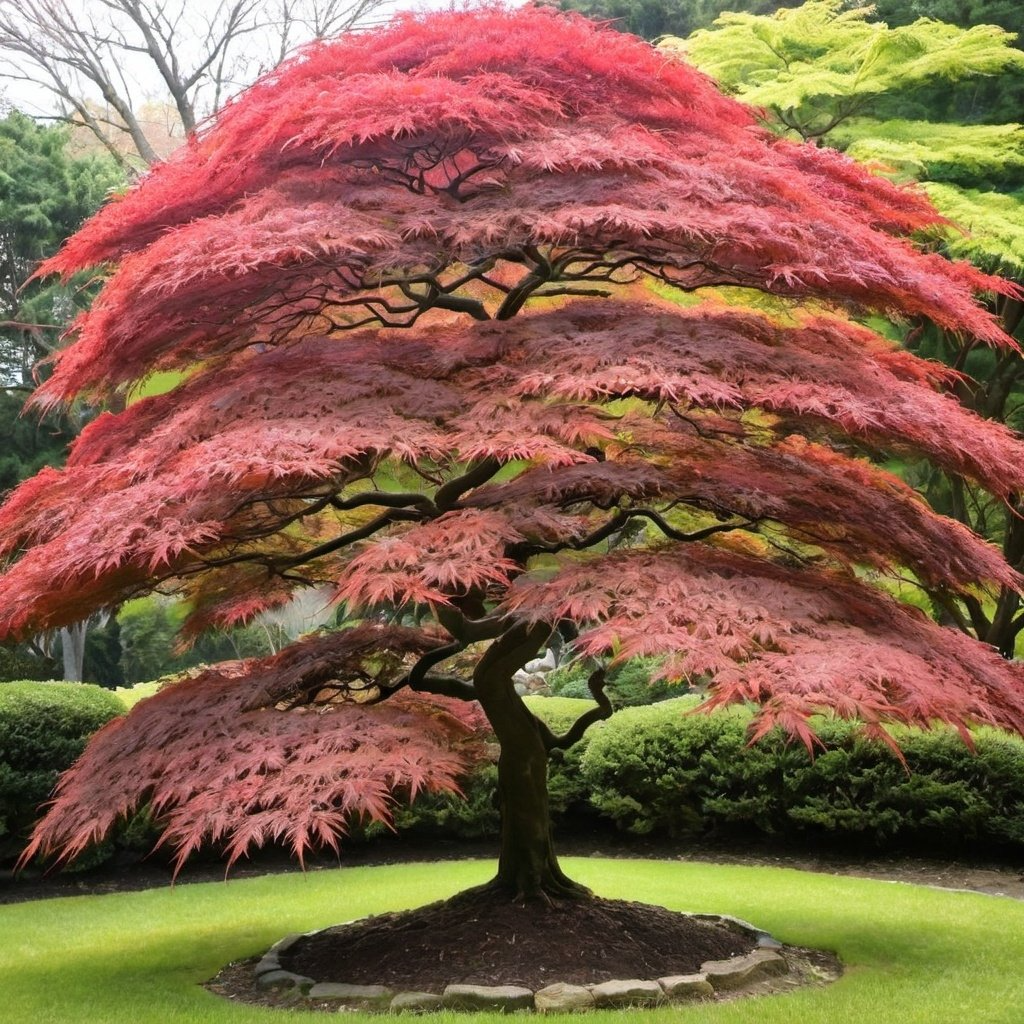1
/
of
1
Japanese Maple Tree Seeds
Japanese Maple Tree Seeds
Regular price
$1.00 USD
Regular price
Sale price
$1.00 USD
Unit price
/
per
Shipping calculated at checkout.
Couldn't load pickup availability
Japanese Maple Tree Seeds
(Acer palmatum small seed U.S.A. d.w)
Japanese Maple trees (Acer palmatum) are renowned for their delicate, lacy leaves and stunning autumn colors. Here are some key points about these trees:
Characteristics:
- Leaves: The leaves are typically deeply lobed and come in a variety of colors, including shades of green, red, purple, and orange.
- Size: They can range in size from small shrubs to medium-sized trees, usually between 6 to 25 feet tall.
- Growth Habit: They have a spreading, often weeping growth habit that gives them a graceful appearance.
Care and Maintenance:
- Sunlight: Japanese Maples prefer partial shade, especially in hotter climates, to prevent leaf scorch.
- Soil: They thrive in well-drained, slightly acidic soil.
- Watering: Regular watering is important, particularly during dry periods.
- Pruning: Prune in late winter or early spring to shape the tree and remove any dead or crossed branches.
Uses:
- Landscape Design: These trees are often used as focal points in gardens due to their striking appearance.
- Bonsai: Some varieties are also popular for bonsai, owing to their intricate branching and delicate foliage.
Zones: 5 to 8
Stratification Requirement: Seed requires 90-120 days cold stratification. Some growers report the seed only requires 60 days cold moist stratification.
Planting Instructions:
Growing Japanese maple tree seeds can be a rewarding experience. Here are the steps to help you successfully grow these beautiful trees:
1. Stratification (Cold Treatment)
- Purpose: Mimics natural winter conditions to break dormancy.
-
Steps:
- Clean Seeds: Remove seeds from samaras and rinse them.
- Soak Seeds: Place seeds in water for 24 hours to soften the seed coat.
- Stratification Medium: Use a mix of peat moss, sand or seed-starting mix.
- Chill Seeds: Place seeds in the stratification medium in a plastic bag. Store in the refrigerator (not freezer) at about 39°F (4°C) for 90-120 days.
2. Planting Seeds
- Timing: Plant seeds in early spring after stratification.
- Soil: Use well-draining soil, preferably a mix of potting soil, sand, and peat moss.
- Containers: Use seed trays or small pots with drainage holes.
- Depth: Plant seeds about 1/4 inch deep.
- Watering: Keep the soil moist but not waterlogged.
3. Germination and Care
- Light: Place containers in a location with bright, indirect light.
- Temperature: Ideal germination temperature is between 60-70°F (15-21°C).
- Watering: Keep soil consistently moist. Avoid overwatering.
- Patience: Germination can take several weeks to a few months.
4. Transplanting Seedlings
- Size: Transplant when seedlings have developed several sets of true leaves.
- Location: Choose a location with partial shade to protect young plants from harsh sunlight.
- Soil: Ensure soil is rich in organic matter and well-draining.
5. Long-term Care
- Watering: Water regularly, especially during dry periods. Japanese maples prefer evenly moist soil.
- Mulching: Apply a layer of mulch around the base to retain moisture and regulate soil temperature.
- Fertilizing: Use a balanced, slow-release fertilizer in spring.
- Pruning: Prune in late winter or early spring to maintain shape and remove any dead or diseased branches.
By following these steps, you can grow your own Japanese maple trees from seeds and enjoy their stunning foliage for years to come.
Share


